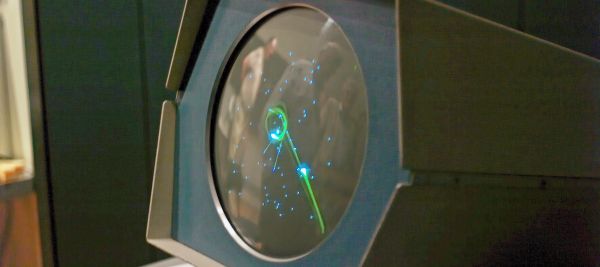
In the 1950s and 60s, the Space Race and the Cold War gave students and researchers at top universities a reason to fight for processing time on the small number of room-sized mainframes in operation at the time. But thanks to the inclusion of a keyboard and a monitor (a luxury for a mainframe at the time), a small group of students at the Massachusetts Institute of Technology discovered that these machines were perfect for games.
After a lot of trial-and-error, these pioneers wound up with Spacewar!, a ship-battling simulation that combined their fascination with space travel with the computational power available in the mainframe. Completed in 1962, word quickly spread amongst the other students at the university, and Spacewar! became a bonafide blockbuster.
While the the game’s creators didn’t know it at the time, Spacewar! wouldn’t just help the future endeavors of Neil Armstrong and Buzz Aldrin, but also launch an entire industry.
 Insert Quarter is a glimpse into gaming’s past, present, and future through an exploration of historical, retrospective, and contemporary reporting.
Insert Quarter is a glimpse into gaming’s past, present, and future through an exploration of historical, retrospective, and contemporary reporting.
Last week, the Smithsonian partnered with the Academy of Interactive Arts & Sciences to honor the creators of Spacewar! in a ceremony that attracted game developers from around the world. Brian Crecente documented the story behind Spacewar!, and the final hours leading up to that uncommon reunion, for Variety:
“It was just a lark. Just a way to learn how to do something.”
Martin “Shag” Graetz sits near Steve “Slug” Russell and Steve Piner as he recounts the work that went into the creation of the first shared, popular video game: “Spacewar!”
Nearby sit the other living members of the team behind that game: Wayne Wiitanen, Peter Samson, Robert Saunders, and Dan Edwards. The final creator, Alan Kotok, died in 2006 of a heart attack at 64.
[…]
For now, they’re seven men sharing a small rotunda with four journalists, remembering those heady days of early software development where anything they created was, almost by definition, pioneering. This trip to Washington, D.C. and the time spent recollecting their work for the Smithsonian’s archives is the first time the entire group has been in the same room together, ever.
‘Spacewar!’: Birth of the Game Industry
One of the students who would eventually discover Spacewar! in the 60s was Nolan Bushnell, the future co-founder of Atari. The young engineer loved the game, but he knew that the massive financial outlay required to operate a mainframe meant that Spacewar! couldn’t have a place alongside the pinball tables and electromechanical machines that filled the arcade parlors of the day.
By the 1970s, Bushnell began working with Ted Dabny on a circuit board that could display a close approximation of Spacewar! on a television without using a computer. This circuit board could be easily reproduced and stuffed into an arcade cabinet for a reasonable cost, and thus, Computer Space was born.
Benj Edwards dove into the details behind the creation of one of Bushnell’s early arcade experiment for Technologizer in 2011:
The genesis of Computer Space dates back to 1962, when a group of computer enthusiasts at MIT created the world’s first known action video game. They called it “Spacewar!” (the exclamation mark was their idea too). It pitted two human-controlled ships against each other in a physics-based space duel that played out on the $20,000 vector display of a $120,000 DEC PDP-1 computer. For those of you keeping score, that totals up to over $1 million in 2011 dollars when adjusted for inflation.
Computer Space and the Dawn of the Arcade Video Game
In between these two momentous events in the early history of video games came Ralph Baer’s creation of the first home console, the Magnavox Odyssey. A Renaissance Man through and through, Baer was constantly tinkering on a number of different projects in his office at Sanders Associates, a small defense contractor in New Hampshire. While waiting for a bus in the Summer of 1966, his mind began “percolating” about the possibility of transforming a television into a game machine through the magic of a small box that he christened the “TV Gaming Display.”
Baer, who died in 2014, wrote about his early work on “Television Games” in a book, Videogames: In the Beginning, that was first published in 2005. He also shared a condensed version of the narrative on his personal website, RalphBaer.com:
In 1966, thoughts about playing games using an ordinary TV set began to percolate in my mind. When I designed and built a TV set at Loral in 1955, I had proposed doing just that: Build in a game to differentiate our TV set from the competition. Management said No and that was that. During a business trip to New York City on the last day of August in 1966, while waiting at a bus terminal for another Sanders engineer to come into town for a meeting with a client, I jotted down some notes on the subject of using ordinary home TV set to play games.
Genesis: How the Home Video Games Industry Began
Over the next six years, Baer’s colleagues at Sanders would help him refine the concept of his game box into the Magnavox Odyssey, the first home console. Fittingly, Baer would donate his notes from this brainstorming session to the Smithsonian in 2003.
